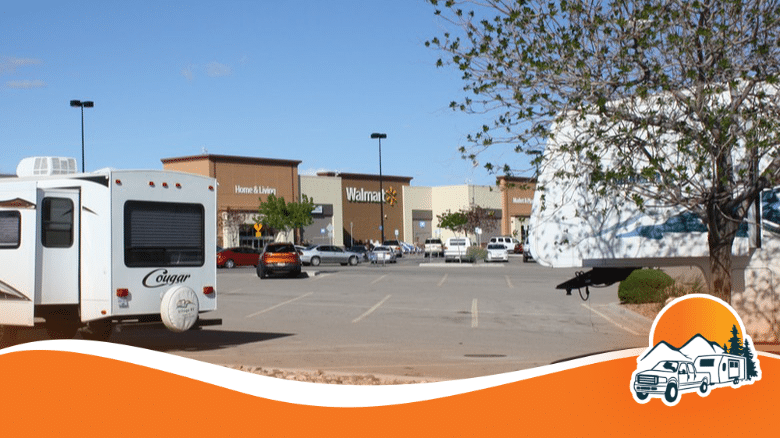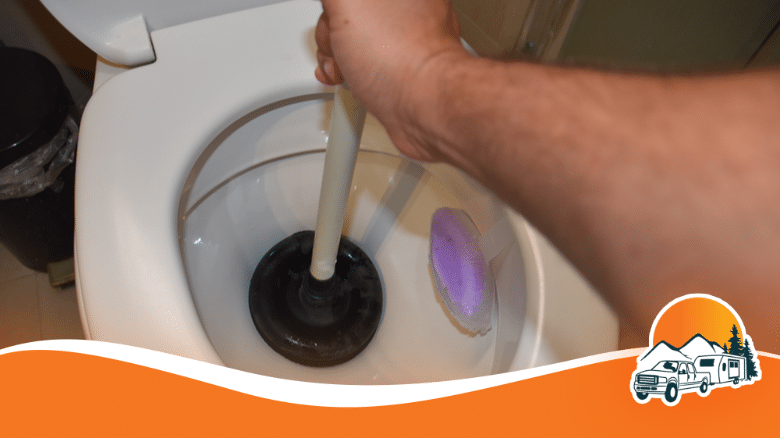Every travel trailer, truck, and RV has unique dimensions. The unique dimensions of the RV or travel trailer determine the components you may use to balance the truck or stop it from swaying. Interestingly. Even the best hitch or sway bar in the market will not help balance your vehicle if it doesn’t meet the exact weight and size requirements of your vehicle.

Sway bars and weight distribution hitches serve the same purpose of providing you with a smooth ride without losing control of your RV. Since both devices do the same job, you may wonder what’s the difference between them and what sets them apart?
In this article, we take a look at sway bars and weight distribution hitches. We also perform an in-depth analysis to find out what truly sets the two apart.
Introducing Sway Bars and Weight Distribution Hitches
As we have previously discussed, a sway bar and a weight distribution hitch perform similar roles. A weight distribution hitch is used to transfer the weight toward the front wheel of the carrying vehicle. A major part of the carrying vehicle, the load, and the trailer is now carried by the hitch.
A sway bar, on the contrary, helps create resistance during swift turns and jitters on the road. The resistance can help distribute the load evenly across the vehicle’s suspension, minimizing the sway’s impact and distributing the kinetic energy.
The table below summarizes both components and the role they perform:
| Concern | Sway Bar | Weight Distribution Hitch |
| Function | The bar creates resistance and minimizes the impact of sways | A weight distribution hitch is used to transfer the weight towards the front wheel of the carrying vehicle |
| Towing Capacity | Cannot tow weight | 600 lbs top 24,000lbs |
| Attachment | Attached to the suspension of your vehicle | Attached to the bumper pull ball hitch |
| Versatility | Doesn’t include weight distribution | Recent models do come with sway control |
| Noise | Noisy | Minimal noise |
| Usage | Great for dangerous roads | Great for road shocks and a long ride |
Weight Distribution Hitch
We begin our comparison by first studying weight distribution hitches in detail. Before we talk about the intricate details of a distribution hitch, let us first study the importance of measuring your trailer’s gross weight. The gross trailer weight is the total of your trailer’s cargo, the trailer itself, and the rear axles. You also need to factor in torque weight, which can come across 1/4th of the total gross trailer weight.
Attaching a trailer or RV to your vehicle brings additional torque weight and related pressure to your towing truck. The additional weight coming from the trailer can eventually cause an uneven balance and lead to a lack of control on the road.
What this means is strong winds, sudden brakes, and a tough U-turn can cause the vehicle to lose balance and eventually lose control.
A weight distribution hitch can work wonders to equally distribute the weight of the attached RV or travel trailer across your vehicle’s body. The even distribution of weight can help prevent disturbances and unevenness on the road.
Perhaps the biggest benefit of a weight distribution hitch is that it can distribute the weight of the RV or travel trailer evenly across the surface of the towing vehicle. The equal load distribution can help minimize the burden on one part of the trailer and can minimize the unevenness on the tires. The weight distribution hitch is commonly known as a load equalizer and a tow hitch.
How Does the Hitch Work?
When you are towing a vehicle, the front axle of the towing vehicle can become uneven, usually leading to fatal accidents and sways. The tongue weight of the towed vehicle is entirely transferred on the back wheels, leading to excessive unevenness and sways while you are driving.
A weight distribution system can help solve your problems by adding equal distribution of weight. A weight distribution hitch is commonly placed around the spring arms between the towing vehicles and can distribute the weight of the towed vehicle. In a typical scenario, 40 percent of the vehicle weight will be transferred to the front wheels, 40 percent to the back wheels, and 20 percent to the axles.
For instance, a trailer with a tongue weight of 1000 lbs can be equally distributed around the components of the towing vehicle. A weight distribution hitch will distribute 400 lbs of the total tongue weight to the back wheels, 400 lbs to the front wheels, and 200 lbs to the axle in the trailer.
The entire process is regulated through the presence of strong bars. The bars are attached through the ball couple and can stop the trailer from shifting towards one side and creating uneven lines. If your weight distribution hitch isn’t the perfect size, there will be uneven squatting and improper balancing across the spring bars and arms.
Important Features of a Weight Distribution Hitch
Having understood how a weight distribution hitch works, we now look at some of the important features you can come to expect from one:
Sway Control
Steel bar weight distribution hitches can help manage sway control in your vehicle. The sway control mechanism is directly connected to the trailer being towed and offers multiple points to manage sway control.
Most weight distribution hitches can help with sway control and manage the disturbances that come with heavy gusts of winds and jitters on the road. The excellent sway control mechanism can also be used as an alternative to sway bars.
Trunnion Bars
Trunnion bars are known as bars with a round, spring-like shape. Weight distribution hitches come with different shapes and styles for the bars they use. You need to consider the vehicle model and shape before you decide on the type of weight distribution system you need.
Round bars can compromise on ground clearance but have better alignment. You can improve the overall outcome with a trunnion bar and get the same performance from multiple travel trailers.
Regulated Towing Capacity
For starters, towing capacity is an identification of the pounds or lbs that a weight distribution hitch can evenly distribute across the surface of the towing vehicle. Different weight distribution hitches come with different towing capacities and specifications.
The total towing capacity of the hitch will come down to the model you purchase, the tow vehicle, and the tongue weight. You can currently find distribution hitches with towing capacities ranging from around 500 lbs to 25,000 lbs.
Safe Ride
Perhaps the most exciting feature of a weight distribution hitch is its ability to provide a safe riding experience. Towing a heavy-weight trailer can be complex because of the physics involved in the process. The experience can become even more complicated if you are traveling through bumpy roads and bad weather conditions.
A weight distribution hitch can be your perfect partner to negate the weather and road conditions. The hitch can regulate the weight when your vehicle jumps into a bump or sways because of the wind. The extra precaution eventually results in better road safety for all involved.
Pros and Cons of a Weight Distribution Hitch
There are quite a few pros and cons associated with a weight distribution hitch that we want our readers to know. Some of them are:
Pros:
- The hitch properly distributes weight across the surface of the front vehicle.
- The equal distribution of weight ensures that the front axle doesn’t lift up during driving.
- The hitch can cut down on horizontal swaying during rough weather.
- The hitch can automatically manage weight and stop during a sudden break.
- The hitch can provide decent control over the trailer or RV being towed.
- The hitch doesn’t come with any additional noise and offers a smooth journey.
- Recent testing proved that the hitch could reduce pressure on trailer components by over 85 percent.
- The towing experience is seamless and flawless.
Cons:
- Installing and setting up a hitch can be a complicated experience for most users.
- Inaccuracies between the tongue capacity and the hitch can permanently damage components.
- You need to reset your hitch whenever you change paths.
Sway Bar with Sway Control
Standard hitches today come with a ball mount, which cannot truly regulate the movement of the towed vehicle during the journey. Regular trailers with standard hitches cannot regulate the extent of the RV’s movements. The RV can experience significant swaying and can move over a 90-degree angle to even cause slippage on the roads.
Sway control can minimize the chances of swaying on the roads and can minimize the probability of slippage on the road. A good sway bar or a weight distribution hitch with sway control are good forms of sway control.
How Do Sway Controls Work?
Most trailers sway at more than 4 inches on a regular basis. The sway control bar puts the trailer axle against the chassis to ensure better momentum and less sway.
The sway bars can hold the truck in place whenever some kinetic force is applied to it. The travel trailer is ultimately aligned in a preventive manner.
Reasons to Have a Sway Bar
A typical sway bar engages your steering, bushing, wheels, and joints for your vehicle’s suspension. Sway bars are similar to friction bars in nature, but they go above and beyond to stabilize the springs when needed.
Sway bar control systems can quickly align to the turbulence and maintain the speed of your vehicle to avoid any damage. The friction can help reduce spray and provide proper mitigation. So, if you are out on the highway, the sway bar can help minimize damage and ensure that your vehicle does not travel in a zigzag manner when the weather is rough.
Key Features of a Sway Control Bar
Some of the key features you can expect from a sway control bar include:
Better Traction
A sway bar can help provide more control and better features with traction. The sway bar can work to prevent any accident on the road and ensure better traction if sudden brakes are applied.
The sway control can work best if you are traveling on an icy highway or you need support to prevent slippage on the road. You can gain steering control with the sway bar and avoid the chances of slippage.
The sway bar can also help improve the performance of your trailer in full. The balance achieved through the sway bar can help improve operations.
Attached
Most modern sway bars come with attached controls to help you activate the sway control on slippery roads. The additional sway control ensures the vehicle travels safely without additional slippage.
Pros and Cons of a Sway bar
There are quite a few pros and cons associated with sway bars that we want our readers to know. Some of them are:
Pros of a Sway Bar
- It provides resistance against all external forces when towing a travel trailer. It can be good for taking U-turns and driving through tough weather.
- Sway bars can help active 98 percent control.
- Easy installation.
- Affordable for towing
- Compatible with most hitches.
Cons of Sway Bar:
- A bit on the noisy side
- Comes without an additional weight distribution system
Conclusion
In conclusion, it is best to reiterate that weight distribution hitches and sway control bars are different in nature. Sway bars are solely responsible for controlling the sway of the vehicle when you are towing a truck or RV on slippery roads or tough weather. The sway bar does not distribute weight, and you may require a separate hitch to do that.
A weight distribution hitch, on the contrary, is responsible for a number of things. The hitch can control the sway system and provide good balance and distribution of weight while you are traveling on the roads.







